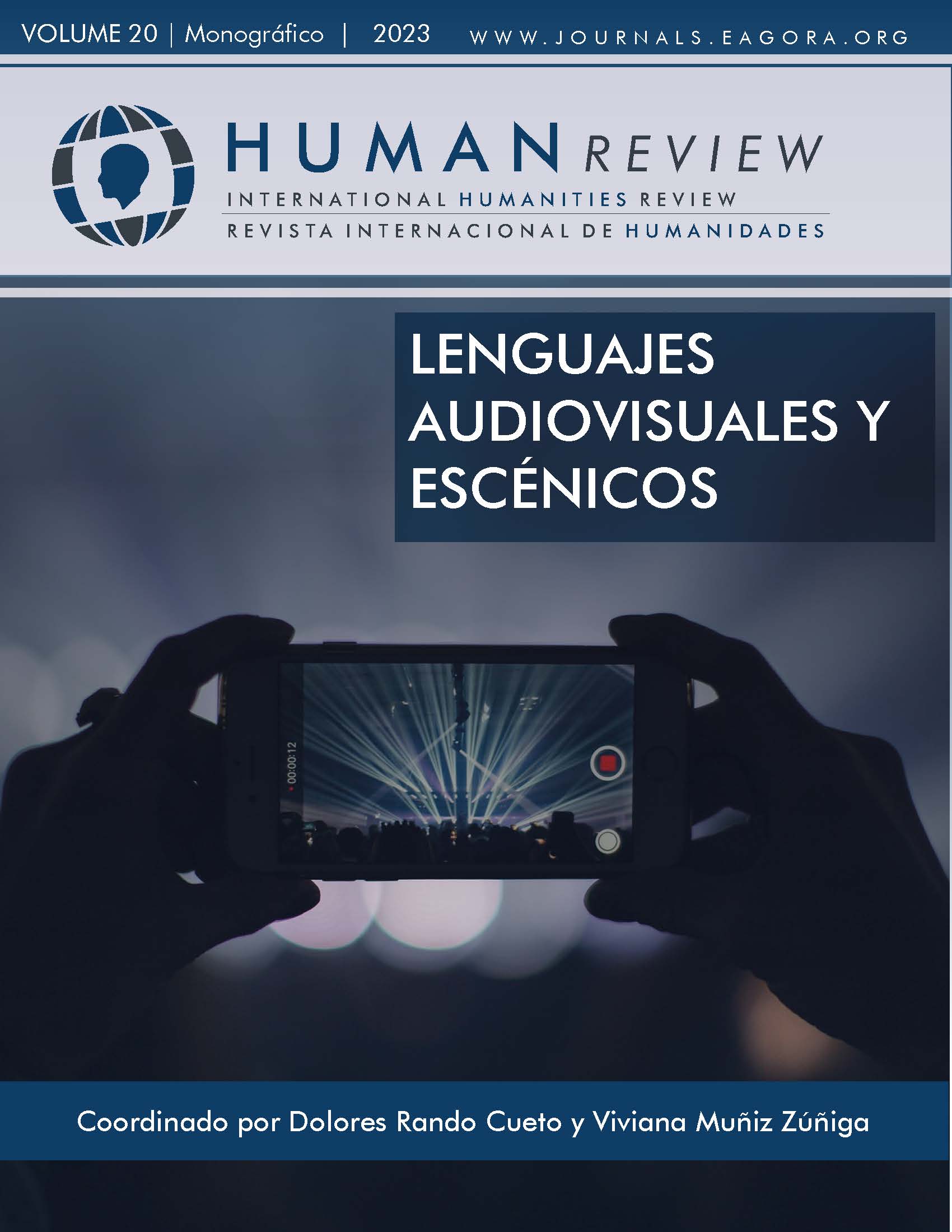A new medium in art
Origins, hypotheses, theories and discourses
DOI:
https://doi.org/10.37467/revhuman.v20.4941Keywords:
New Media, Video arte, Feedback, Video Instalación, Connected Bodies, Art and self-representation, IdentityAbstract
The video was considered by Gene Youngblood (1979) as a new medium of artistic creation, whose codes will open new perspectives to the moving image giving it its own aesthetic entity. Various theories related to communication and art by authors such as Wiener, Benjamin, Brecht, McLuhan, Burris are analyzed. Likewise, he studies pioneering works and the use of the feedback loop as a element between the emitter and the receiver. Wipe Cycle (1969) by Frank Gillette and Ira Schneider and Time Delay Room (1974) by Dan Graham will show us the keys to understanding the inner workings of a new medium that had just been born.
References
Badía, M. (1998) Peter d‘Agostino o el uso crítico y ético de la tecnología. Aleph. Arte y Pensamiento, 5. http://aleph-arts.org/pens/badia.html
Bhabha, H. (1994) El lugar de la cultura. Manatial.
Benjamin, W. (1975). Tentativas sobre Brecht. Taurus.
Bonet, E. (1987). Metavideo. Del estado del vídeo, su historia y estética. En La Imagen Sublime. Museo Centro de Arte Reina Sofía.
Burris, J. (1996) ¿Fue el portapack la causa del video?. En Notas sobre la formación de un nuevo medio. Milenium Film Journal. 29. https://mpison.webs.upv.es/2222/textos/portapak.htm
Cueto, J. (1984) El complejo de los orígenes. Catálogo Primer Festival Nacional de Vídeo. Circulo de Bellas Artes.
Gigliotti, D. (1970). A brief History of Raindance. Radical Software. http://radicalsoftware.org/e/history.html
Hanhardt, J. (1990). G. Dé-collage /collage. Notes Towards a Reexamination of the Origins of Video Art, en Illuminating Video [Aperture; The Bay Area Video Coalition]. Sally Jo Fifer and Doug Hall,
Krauss, R. (1996). La escultura en su campo expandido, en La originalidad de la vanguardia y otros mitos modernos. Alianza Editorial.
Krauss, R. (1979). Video: the Aesthetics of Narcissism. Ed. New Artist Video. A critical Anthology. E.P. Dutton.
McLuhan, M. (1964). Understanding Media: The Extensions of Man. Nueva York, Mentor, [trad. Esp. Paidós, 1996].
McLuhan, M. (1967). The Medium is the Massage (written with Quentin Fiore; produced by Jerome Agel) [trad. Esp. Paidós, 1988].
Ortuño, P. (2012). Video: un arte comprometido/contemporáneo. Creatividad y Sociedad. 19.
Rush, M. (2005). New Media in Art. Thames and Hudson LTD.
Turner, V. (1967). The Forest of Symbols: Aspects of Ndembu Ritual, Cornell University Press.
Van Gennep, A. (1960). The Rites of Passage (1909). University of Chicago Press. DOI: https://doi.org/10.7208/chicago/9780226027180.001.0001
Villaplana Ruiz, V. y Ortuño Mengual, P. (2018). Film Poetry. Repensando el cine de vanguardia: arte en movimiento y poéticas visuales. Revista de Comunicación de la SEECI, 47, 1–15. https://doi.org/10.15198/seeci.2018.0.01-15 DOI: https://doi.org/10.15198/seeci.2018.0.01-15
Wiener, N. (1998). Cibernética o el control y comunicación en animales y máquinas. Tusquets.
Wiener, N. (1988). Dios & Golem, S.A. Siglo Ventiuno Editores.
Youngblood, G. (1970). Expanded Cinema. E.P. Dutton Studio Vista, www.ubu.com/historical/youngblood/expanded_cinema.pdf).
ZKM Center for Art and media Karlsruhe (s.f.). https://zkm.de/en/artwork/wipe-cycle
Downloads
Published
How to Cite
Issue
Section
License
Those authors who publish in this journal accept the following terms:
- Authors will keep the moral right of the work and they will transfer the commercial rights.
- After 1 year from publication, the work shall thereafter be open access online on our website, but will retain copyright.
- In the event that the authors wish to assign an Creative Commons (CC) license, they may request it by writing to publishing@eagora.org









